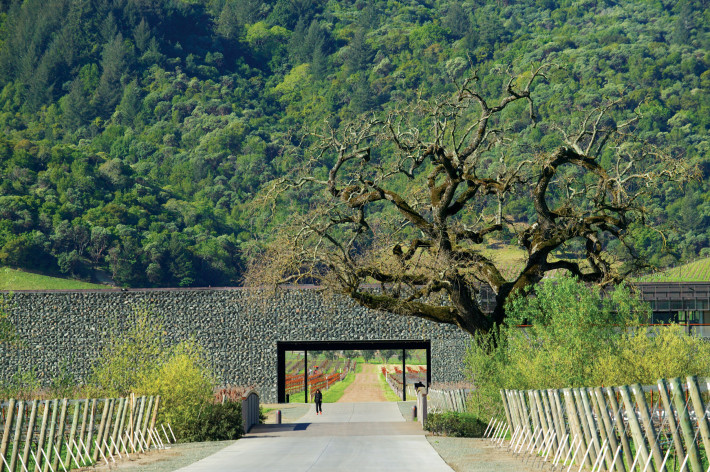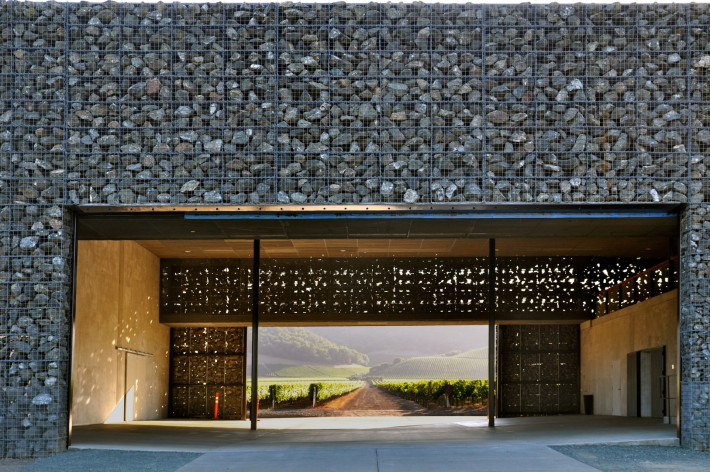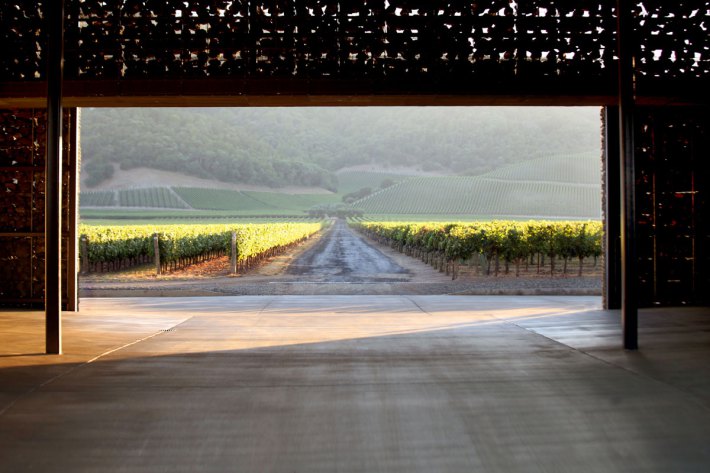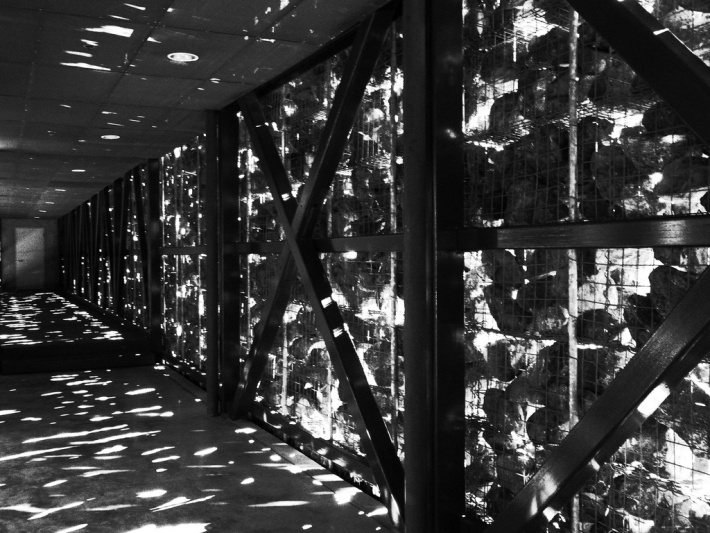Herzog & de Mueron is a Swiss contemporary architecture firm, one of the best in the world according to me. They have been hired to design the Kolkata Museum of Modern Art which is a very exciting prospect for all of us design lovers in India. I heard them speak some time back and one project in particular caught my attention and imagination.
It is one of their lesser known works, the Dominus Winery Estate in Sonoma, California. I love the contemporary design aesthetic, the simple building form, use of natural material, the play of light in the interiors and the building’s ability to blend into the surrounding landscape.
I specially love the elegance of clean straight lines and linear geometry that reveals textures and fine details when inspected up close.
All images via Dominus Estate (First image via Travelmodus).































